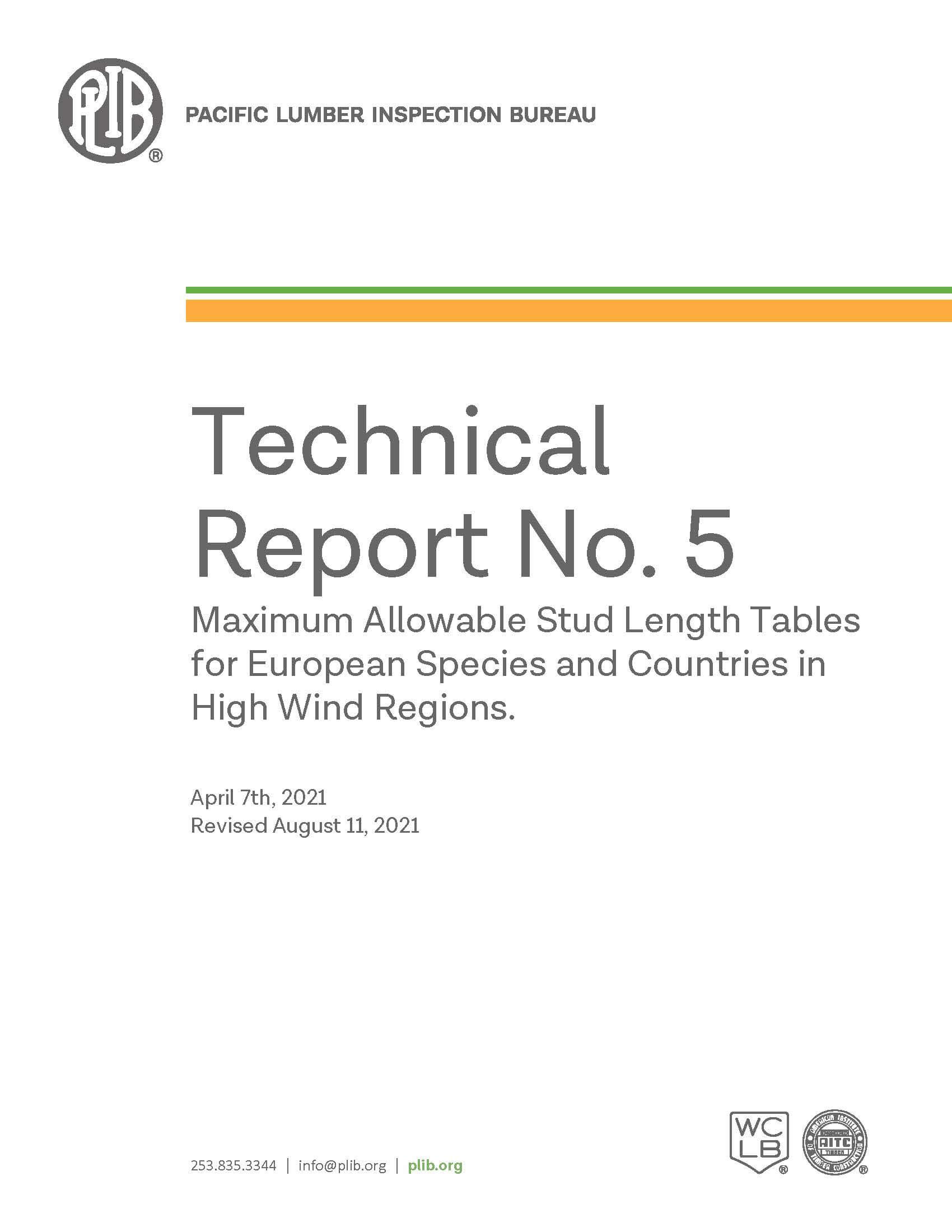In late February and early March, PLIB and other agencies began to receive inquiries from building officials, engineers and retail yards in North Carolina concerning the use of European species as wall framing members in high wind zones (primarily the coastal regions) of North Carolina.  What was being questioned was the allowable wall height when certain European species from specific countries or regions was used as the stud framing material. Published wall height and stud length tables did not include any European species and this created confusion and uncertainty with some officials and engineers. PLIB engineering staff, working in close cooperation with the American Wood Council, developed a comprehensive set of allowable stud length tables for 2×4, 2×6 and 2×8 studs at 12″, 16″ and 24″ spacing and wind speeds from 90 mph to 195 mph for all European species and countries/regions that PLIB has published design values for. The tables, along with the design criteria, assumptions and references used to develop them, appear in a newly published technical report, Technical Report No. 5 – Maximum Allowable Stud Length Tables for European Species and Countries in High Wind Regions. The publication is available as a free download from the PLIB website.
What was being questioned was the allowable wall height when certain European species from specific countries or regions was used as the stud framing material. Published wall height and stud length tables did not include any European species and this created confusion and uncertainty with some officials and engineers. PLIB engineering staff, working in close cooperation with the American Wood Council, developed a comprehensive set of allowable stud length tables for 2×4, 2×6 and 2×8 studs at 12″, 16″ and 24″ spacing and wind speeds from 90 mph to 195 mph for all European species and countries/regions that PLIB has published design values for. The tables, along with the design criteria, assumptions and references used to develop them, appear in a newly published technical report, Technical Report No. 5 – Maximum Allowable Stud Length Tables for European Species and Countries in High Wind Regions. The publication is available as a free download from the PLIB website.
Technical Report No. 5 provides critical technical support to PLIB members and non-members alike as well as to builders, code officials, engineers and retailers. At a time when lumber shortages are creating many challenges for builders, these tables ensure market access for European lumber which is quickly becoming an increasingly important lumber supplying region.
For more information on this publication or other engineering related questions, contact PLIB’s Director of Engineering Services, Henry Morris, at hmorris@plib.org or (253) 835-3344.





